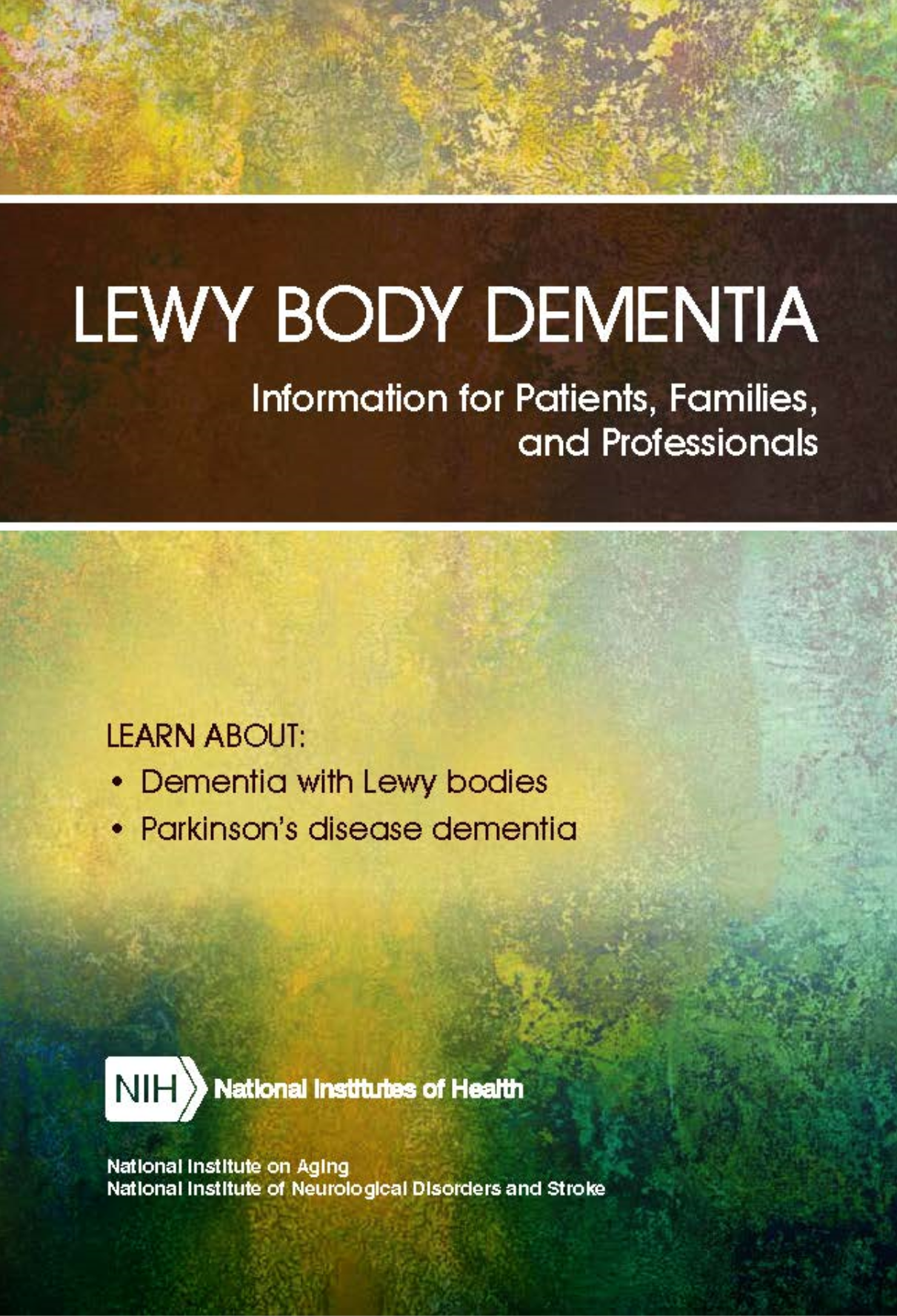Informing the Patient and Care Partner
Your preparedness to receive a Lewy body disease diagnosis may vary significantly depending on the disease. While there is increasing awareness of disease with Lewy bodies (DLB) among healthcare practitioners, public awareness remains relatively low. Because of the multiple presenting features of DLB, loved ones may suspect the more widely known disorders such as Alzheimer’s disease (AD) or Parkinson’s disease (PD), or a psychiatric disorder. The first time many people hear of Lewy body disease is when they or their loved one are diagnosed. Getting accurate information about the diagnosis and setting appropriate expectations with your doctor is essential to the quality of your care. After a Parkinson’s dementia (PD) diagnosis, the person with PD and their care partners are usually made aware of the potential of mild cognitive impairment or dementia to develop, so they may be more-well prepared to receive a diagnosis of Parkinson’s disease dementia.
While difficult news to receive, an LBD diagnosis can provide a certain degree of comfort as it helps the person with LBD and their loved ones make sense of what they have been experiencing. You may have discussions with the doctor about LBD and its anticipated impact over several office visits because there are many complex issues of clinical and caregiving matters involved.
Documenting an LBD diagnosis is important, because of the potential for severe medication sensitivities and because some healthcare providers who are not specialists have a relatively low awareness of LBD. One important role for care partners is to be the first line of defense against the administration of medications that may cause adverse reactions.
Prognosis
Like AD, the rate of progression of LBD can vary greatly. The typical lifespan after diagnosing LBD is about five to seven years.1,2 Anecdotal experience suggests that the trajectory of LBD progression may mirror the rate of early symptom onset and progression. As research advances, there is always the possibility that new options for treatment that may alter the progression of the disease.
Progression of LBD
There are no formally defined stages of LBD like there are in AD. Instead, expert insights may be useful to both the clinician and LBD family. Efforts are underway to define the mild cognitive impairment (MCI) stage of DLB to allow for an earlier diagnosis. Criteria have been developed for MCI in PD.
Early, suggestive indicators of LBD
- Many times, you may only recognize initial symptoms when you think back on the early days, possibly extending back 1-3 years.
- Occasional, minor, episodes of forgetfulness, sometimes described as lapses of concentration or ‘switching off’.
- An initial brief period of delirium in association with genuine physical illness and/or surgical procedures, followed by recovery, followed by a subsequent mental and physical decline.
Time for diagnosis and treatment
- Persistent cognitive impairment with marked fluctuations in severity.
- Nighttime worsening and nightmares.
- More elaborate episodes with confusion, visual and auditory hallucinations and secondary paranoid delusions.
- Occasional to frequent falls, either due to balance instability or sometimes accompanied by episodes of disturbances of consciousness.
- Extensive medical screening performed with negative results.
Advancing disease
- Sudden increases in confusion, psychosis, and behavioral disturbance may be brought on by medication reactions or other medical conditions.
- Severe neuroleptic (drugs that depress nerve function) sensitivity reactions may bring on the rapid development of rigidity, marked worsening in cognitive functioning, and heavy sedation.
- In cases not receiving neuroleptics or tolerating low dosage of one, the typical natural history is a gradually progressive decline into severe dementia.
- Physical and speech therapy may help maintain functional abilities for some time.
- Increasing behavioral disturbances, including shouting, aggression on approach and evidence of persisting delirium.
- Death is usually due to respiratory or cardiac disease, or injuries sustained in falls.
1. Williams, M. M., Xiong, C., Morris, J. C. & Galvin, J. E. Survival and mortality differences between dementia with Lewy bodies vs Alzheimer disease. Neurology 67, 1935–1941 (2006).
2. Jellinger, K. A., Wenning, G. K. & Seppi, K. Predictors of survival in dementia with Lewy bodies and Parkinson dementia. Neurodegener. Dis. 4, 428–430 (2007).
 LBDA has teamed up with FTD to offer you the opportunity to purchase fresh flowers to celebrate any occasion. FTD is well known for providing the highest quality flower arrangements and floral bouquets—perfect for birthdays, anniversaries, or any holiday throughout the year.
LBDA has teamed up with FTD to offer you the opportunity to purchase fresh flowers to celebrate any occasion. FTD is well known for providing the highest quality flower arrangements and floral bouquets—perfect for birthdays, anniversaries, or any holiday throughout the year. Lewy body dementia (LBD) is a complex, challenging, and surprisingly common brain disease. Although lesser known than its “cousins” Alzheimer’s disease and Parkinson’s disease, LBD is not a rare disorder. More than 1 million Americans are affected by its disabling changes in the ability to think and move. This 40-page booklet helps people with LBD, their families, and professionals learn more about the disease and resources for coping.
Lewy body dementia (LBD) is a complex, challenging, and surprisingly common brain disease. Although lesser known than its “cousins” Alzheimer’s disease and Parkinson’s disease, LBD is not a rare disorder. More than 1 million Americans are affected by its disabling changes in the ability to think and move. This 40-page booklet helps people with LBD, their families, and professionals learn more about the disease and resources for coping.